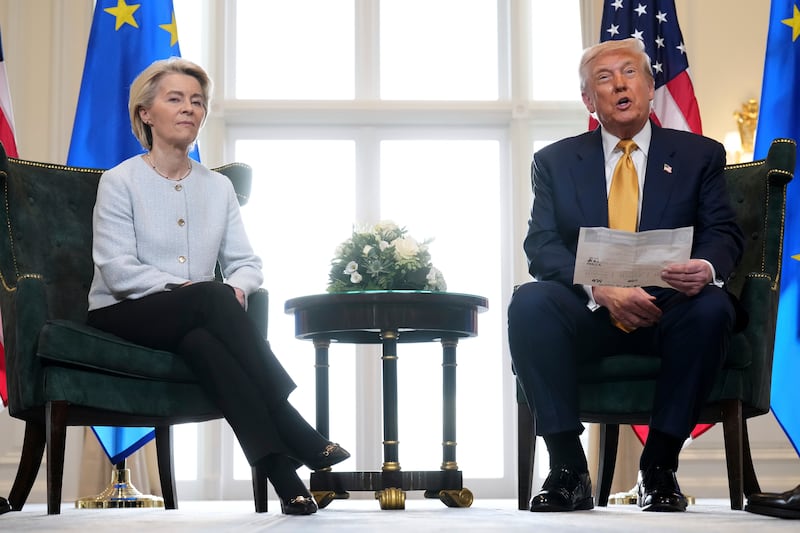- President Trump revealed a global trade levy will be set at 15% to 20%.
- On Sunday, the president announced new EU trade deal including a 15% import fee.
- The new global rate is an increase from the 10% blanket levy set earlier this year.
Just a day after announcing a trade deal with the European Union, President Donald Trump said the blanket tariff rate on countries that haven’t reached their own agreements with the U.S. will fall in the 15% to 20% range.
Trump revealed the global tariff target Monday while speaking to reporters in Turnberry, Scotland.
“For the world, I would say it’ll be somewhere in the 15% to 20% range ... I just want to be nice,” Trump said, alongside British Prime Minister Keir Starmer, per a report from CNBC. “I would say in the range of 15% to 20%, probably one of those two numbers.”
U.S. and EU close out contentious trade talks
While the president had previously threatened the EU with a tariff rate as high as 50%, he appeared with European Commission President Ursula von der Leyen on Sunday to announce a trade deal with the 27-member bloc that set the U.S. import levy at 15%.
“It’s a very powerful deal, it’s a very big deal, it’s the biggest of all the deals,” Trump said Sunday.
The headline figure is a 15% tariff rate on about 70% of European goods brought into the U.S., including cars, computer chips and pharmaceuticals, according to the Associated Press.
The remaining 30% is still open to further decisions and negotiations.
Von der Leyen said that the EU and U.S. agreed on zero tariffs on both sides for a range of “strategic” goods: Aircraft and aircraft parts, certain chemicals, semiconductor equipment, certain agricultural products and some natural resources and critical raw materials.
Other aspects of the agreement include a promise that EU companies will purchase $750 billion worth of natural gas, oil and nuclear fuel over three years to replace Russian energy supplies that Europe is seeking to exit as well as an additional $600 billion in U.S. investments, though that part of the deal is not legally binding.
The New York Times notes the United States and the EU have the largest economic relationship in the world by many measures, trading nearly $2 trillion in goods and services per year. But while von der Leyen characterized the agreement as “a good deal” other EU leaders had mixed reactions.
The French trade minister, Laurent Saint-Martin, criticized the EU’s handling of the negotiations, according to a report from The Guardian, saying the bloc should not have refrained from hitting back in what he described as a power struggle initiated by Trump.

“Donald Trump only understands force,” Saint-Martin told France Inter radio. “It would have been better to respond by showing our capacity to retaliate earlier. And the deal could have probably looked different.”
In a Sunday posting on X, Netherlands Prime Minister Dick Schoof said that “no tariffs would have been better,” but said the deal “provides more clarity for our businesses and brings more market stability.”
Trump’s Monday signaling of a 15%-20% blanket tariff rate represents an escalation of the 10% global import levy set earlier this year for countries without their own agreements, which represents most of the U.S. international trading partners.
“We’re going to be setting a tariff for essentially the rest of the world, and that’s what they’re going to pay if they want to do business in the United States, because you can’t sit down and make 200 deals,” Trump said.
To date, Trump and his trade team have struck trade deals with about two dozen countries.


